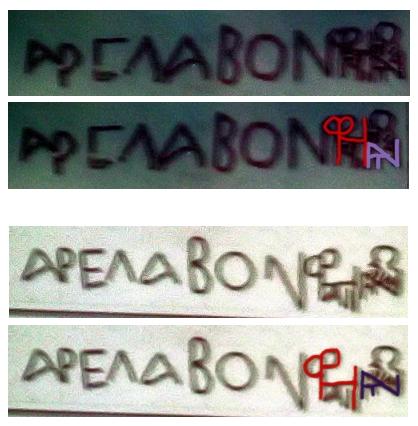Well, we have a cremation so I guess we take that as being the most likely candidate for the original occupant given your reasoning there. That's certainly something we'd agree on then. Still, assuming that it is, making an inhumation the central feature of this is rather curious. If you're going to build around a pre-existing thing, you do get to measure it all out before you start construction - you'd have thought someone would have noticed it's squiffy before they started. More understandable if it postdates the chamber and they're working around pre-existing flooring or perhaps that things were fully in motion before the grave was discovered underneath. Limestone over marble may be a reflection of the fact that this is in an archaic graveyard - not everyone in it is a criminal, though I suppose some may be. How would we know? Perhaps a disarticulated pile of bones from where the body had been exposed and the scavengers had had time to get at the corpse?Taphoi wrote: It is fairly clear that the cist grave either pre-dates or post-dates the monument, because it is built at a much lower standard than the rest of the monument. Its blocks are roughly hewn limestone. If it were built at the same time as the overlying monument, it ought to be made from finely sculpted marble.
We now have it confirmed by the archaeologists that the tomb was sealed before the Romans arrived in 168BC. So if the cist grave post-dates the monument, it would probably have to have been authorised by the Hellenistic kings of Macedon. But it is very unlikely that they would have authorised a mean burial in the heart of such a monument and there is no real reason why such a later burial would have been off-centre. Also such a Hellenistic burial should have been a cremation. Also nobody would have bothered to seal this tomb unless the bones were important (they would not have cared about preserving already smashed art works and if they had then they would have mended them).
The only thing that really makes sense is that the cist grave is an earlier tomb of somebody disregarded at the time of burial, but subsequently exalted by others. The reason it is off centre is that the builders of the monument did not know its exact location and did not wish to excavate the cist grave to establish its exact location out of reverence for the occupants.
The reason that the principal occupants were not cremated is that, although very important people, they were executed as criminals. The only other explanation yet offered for this is that the bones were Roman burials, after cremation had gone out of fashion. It is much more significant than the overblown "Hephaistion" graffiti story that this Roman explanation for inhumation has now become impossible.
Best wishes,
Andrew
Which bones were important? We've two men, a woman, a child and a cremation in there. Another sensible view would be that the site was covered over, as others were, because the cult was no longer relevant. The evidence for a continued period of use is quite interesting really.



